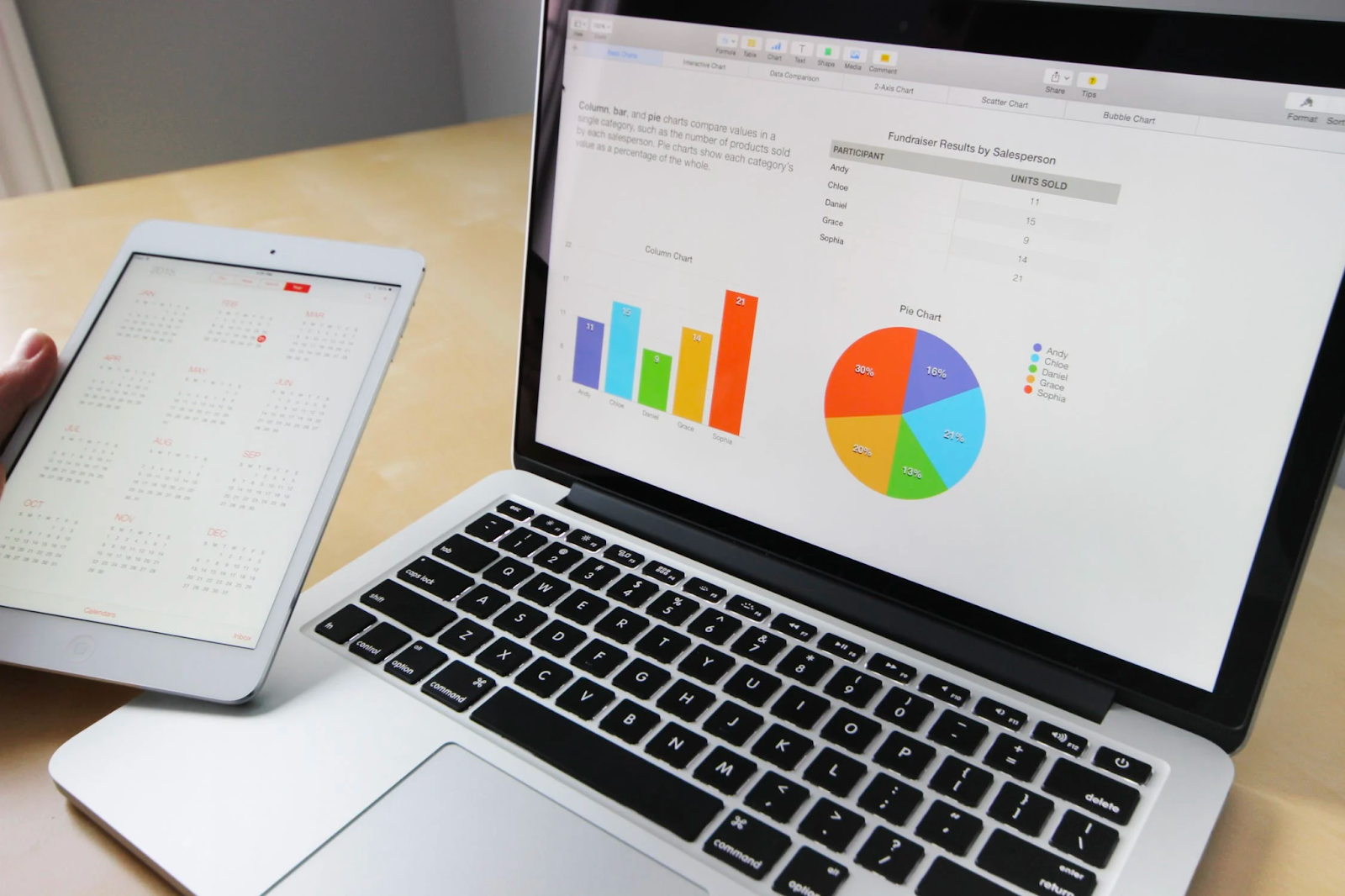Data entry is, quite simply, the act of entering data into a computer. It’s a process that’s essential to nearly every business in the world and one that can be both time-consuming and error-prone.
That’s why an increasing number of businesses are turning to data entry automation since it can lead to better insights and decision-making. Automating data entry can speed up the process while reducing the chances of errors.
In this blog post, we’ll cover:
- What is Data Entry?
- Types of Data Entry
- Difference Between Manual Data Entry and Data Automation
- What are the benefits of automating your data entry?
- Data Entry Skills
- Data Entry Pitfalls and How to Avoid Them
Let’s dive in.
What is data entry?
In simple terms, data entry involves the transfer of data between two formats. People who work in data entry are responsible for inputting information into computer systems. This can be done in a number of ways, including typing on a keyboard, using a scanner, or speaking into a microphone.
Data entry can be as simple as converting a text document into a PDF or as complex as transferring data from one computer system to another.
Different businesses and organizations benefit from it since it makes it easy to store and retrieve information; however, companies need to secure data as there is a risk of being leaked or stolen.
Data entry workers must be able to type quickly and accurately, and they must be able to pay close attention to the information they are inputting.
Types of data entry
There are many types of data entry, each of which has its specific set of skills and requirements. The most common type of data entry is alphanumeric, which involves the input of both letters and numbers. This type of data entry is often used for things like contact information or financial data.
Other types of data entry include numeric-only, which is often used for things like ID numbers or ZIP codes, and alpha-only, which is used for product codes or passwords. There are also more specialized types of data entry, such as medical coding and transcription.
Data entry can be done by hand, or it can be done using a computer. When done by hand, it is usually done with a pencil or pen on paper. When done on a computer, it can be done with a keyboard, mouse, or scanner.
This task is relatively easy to learn, but it does require some practice and attention. Businesses need data entry in order to benefit their employees and overall business.

Let’s take a more in-depth look at the types of data entry. The task can be classified into three types based on the amount of data entered, the level of accuracy required, and the level of complexity involved. They are:
1. Numeric data entry
This type of data entry involves entering numbers into a computer. The data can be in the form of whole numbers, decimals, or even fractions. Numeric data entry is primarily used in fields such as accounting, bookkeeping, auditing, statistics, etc.
2. Alphanumeric data entry
As the name suggests, this type of data entry involves numbers and alphabets. Unlike numeric data entry, alphanumeric data entry is not limited to any particular field. This type of data entry is used in a variety of fields such as medical transcription, legal transcription, data processing, etc.
3. Image data entry
Image data entry is a type of data entry where images are converted into a digital format and then entered into a computer. This type of data entry is mostly used in the field of medical imaging, where X-rays, MRI scans, etc. are converted into a digital format and then stored in a computer.
Difference between manual data entry and data automation
Manual data entry is inputting data into a computer system by hand. This can be done using a keyboard, mouse, or other input devices.
Data automation, on the other hand, is the process of automatically inputting data into a computer system without the need for manual input. This can be done using various means, such as optical character recognition (OCR) or barcode scanners.
Businesses use data entry for a variety of tasks, including maintaining customer records, updating inventories, and tracking sales. Data entry can be performed manually or through automated means.
There are several advantages and disadvantages to both manual data entry and data automation. Some view manual data entry as generally more accurate than data automation, as it is less likely to introduce errors. However, it is also much slower and more labor-intensive.
On the other hand, data automation is much faster and more efficient, but it is also more likely to introduce errors.
In general, manual data entry is best suited for small data sets that are not likely to change often. Data automation is best suited for large data sets that are subject to change.

What are the benefits of automating your data entry?
Getting data entered into a company’s database can be a lengthy and arduous process.
That’s why automating your data entry can be a game-changer for your business. When you automate data entry, you can free up your staff to focus on higher-level tasks, improve accuracy and efficiency, and get a better handle on your data overall.
Here are just a few benefits of automating your data entry:
1. Increased accuracy
One of the biggest benefits of automating your data entry is increased accuracy. When you automate data entry, you can eliminate many of the errors that can occur when data is entered manually.
This is because automated data entry systems often come with built-in validation features. For example, you can set up your system to only accept data that is in the correct format. This can help to ensure that your data is clean and accurate from the start.
2. Increased efficiency
There are lots of benefits of automating your data entry and one is to increase efficiency. Automated data entry systems can often process data much faster than a human can. This can be a huge time-saver, especially if you have a lot of data to enter.
Additionally, data entry can improve customer service because businesses use it for a variety of purposes. There is no doubt that data entry services are important for businesses.
3. Improved data quality
When you automate your data entry, you can also improve the overall quality of your data. This is because automated systems can help to ensure that your data is entered consistently and in the correct format.
As Forbes points out, low data quality severely affects any business’ performance, which is why automating entry is important.
This can make it much easier to analyze and use your data down the line.
4. Reduced costs
Automating your data entry can also help to reduce your costs. This is because automated systems can often do the job of multiple data entry staff members at a fraction of the cost.
Besides saving you money, automating your data entry helps you prevent errors.
5. Greater insight into your data
When you automate your data entry, you can also gain greater insight into your data. This is because automated systems can help you to track and analyze your data more effectively.
For example, you can use data analytics tools to track trends and patterns in your data. This can give you valuable insights that you can use to improve your business and alleviate the amount of work that needs to be done.
Overall, automating your data entry can be a great way to improve your business. It can help you increase accuracy, efficiency, and quality while reducing costs. In addition, it can give you greater insight into your data so that you can make better decisions for your business.

Data entry skills
Many companies outsource data entry, which also make it a popular work-from-home job option. Do you have what it takes to be a data entry professional? The work is relatively easy to perform and can be done on a flexible schedule.
It is one of the most commonly used functions in any business office and is a critical skill for many positions. Although the use of computers has diminished the need for data entry in some cases, the ability to quickly and accurately input data is still a valuable skill.
But data entry is not a job for everyone. It requires a certain set of skills and attention to detail. Let’s take a closer look at what it takes to be a data entry worker.
The first step in becoming a data entry specialist is to have strong keyboarding skills. This means being able to type quickly and accurately without looking at the keyboard. Many people develop their keyboarding skills by taking typing classes or practicing independently.
In addition to keyboarding skills, data entry specialists need to be able to pay attention to detail and be able to follow instructions. Good data entry specialists can understand complex data sets and input the data accurately.
A strong data entry skill is a necessity for a wide variety of industries, so it is important to possess these skills when applying for jobs. Many employers will require applicants to take a data entry test as part of the interview process.
Data entry tests usually involve typing a set of data into a computer program. The employer wants to see how quickly and accurately the applicant can type the data.
There are a few things that applicants can do to prepare for a data entry test:
- First, it is important to practice typing quickly, and there are a few things that applicants can do to prepare for a data entry test.
- Second, it is helpful to understand the format of the data that will be typed.
- And finally, it is a good idea to have a general understanding of the company and the position for which you are applying.
By taking the time to prepare for a data entry test, you can show potential employers and managers that you have the skills needed to be a successful data entry specialist.

Data entry pitfalls and how to avoid them
Data entry is the bread and butter of most office work and can make or break a company’s efficiency. It is important to make sure that every data is accurate and aligned. Here are some tips on how to avoid the most common data entry pitfalls:
1. Data entry mistakes; incorrect or missing data.
This can be caused by human error or by faulty input devices. Make sure all input devices are working correctly and double-check all your data for accuracy.
2. Data entry errors go undetected.
Without proper validation checks, data can be entered into a system without being verified. It is important to always put quality control measures in place, such as checksums and parity bits, to prevent this from happening.
3. Data is entered incorrectly.
This can happen when data is entered into a system that has different requirements for how it should be formatted.
For example, data that is meant to be entered into a spreadsheet may need to be in a certain format, such as comma-separated values. If the data is not properly formatted, it can cause problems when the data is processed.
To avoid this, always ensure your data is properly formatted before entering it into a system. There is no denying that data entry consists of mundane tasks, but you must focus on them.
4. Data entry that is not authorized.
This can happen when data is entered into a system by someone who does not have the proper permissions.
Make sure that only authorized users can access the data entry interface to prevent this. By following these tips, you can prevent the most common data entry pitfalls and ensure that your data is accurate and error-free.
Final Thoughts
Data entry is an important but often overlooked part of many businesses. It is a necessary task that can be very time-consuming. There are many ways to speed up the data entry process, including using software that can automate some tasks.
When choosing a data entry solution, it is important to find one that is flexible and scalable to meet the needs of your business.
